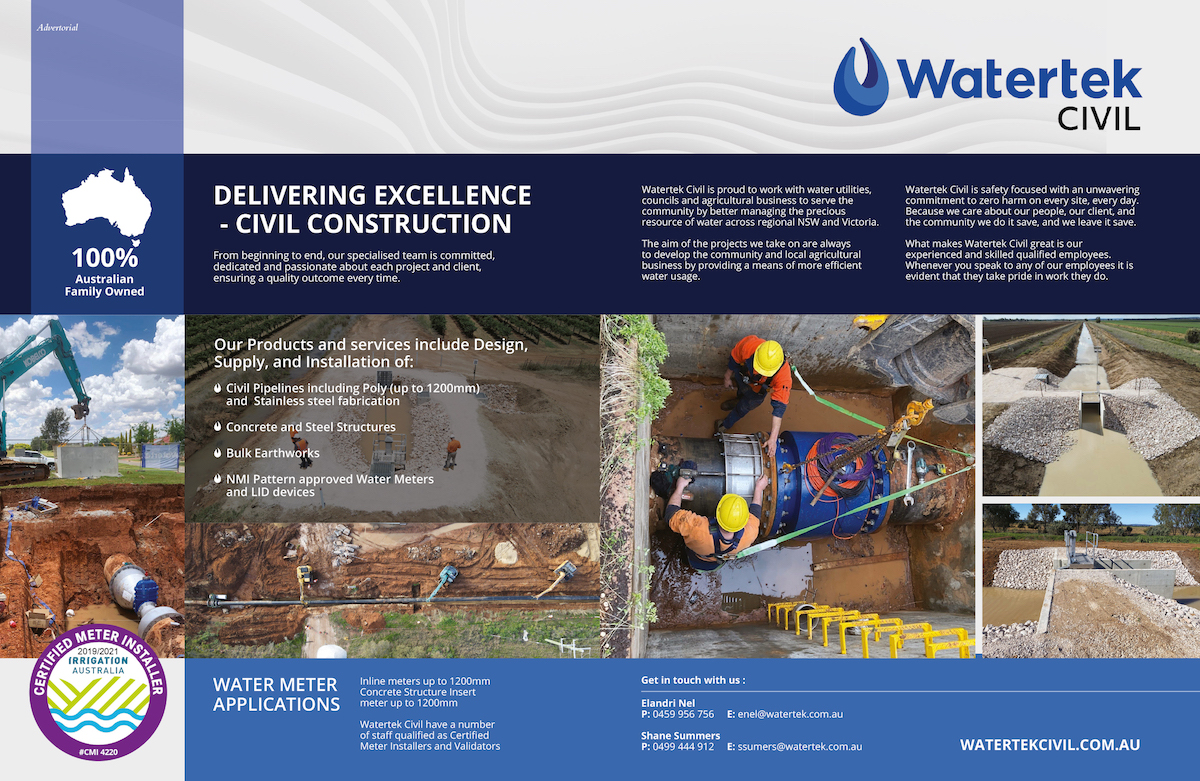Even if COVID-19 hasn’t quite managed to find its way into every nook and cranny of the world, it sure has found a way to impact it. Take the Murrumbidgee region, for instance. Tucked away within the Riverina area of south-western New South Wales, the area, which is largely wetland, is one of the most diverse and productive agricultural regions in Australia, contributing roughly A$5 billion annually to the national economy and earning it the nickname Australia’s Food Bowl.
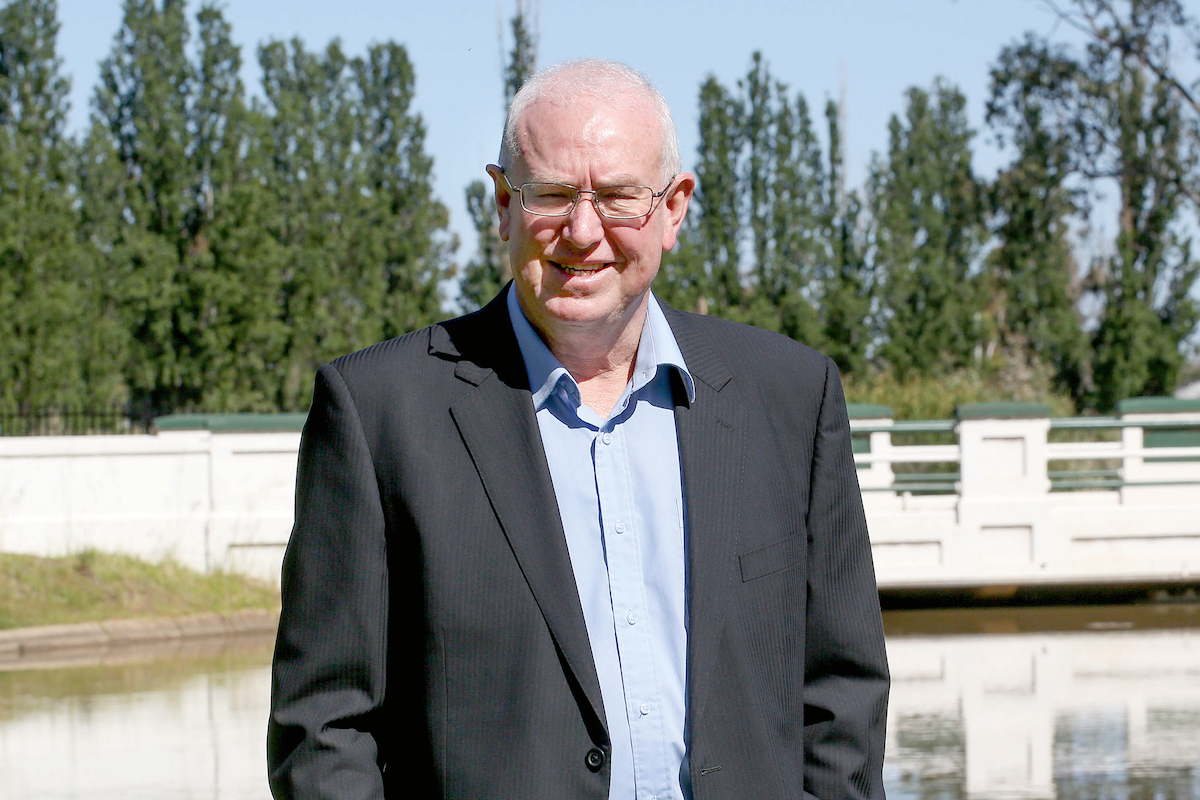
Yet, no matter its stunning natural landscape, including the network of lagoons and billabongs between Narrandera and Carrathool, and robust with a diverse range of waterbirds and other significant wildlife, the pandemic still found a way to make its most unwelcome presence known in this idyllic country area. “We’re located hours outside of Sydney in Hanwood, yet we were still affected by the recent lockdowns,” Murrumbidgee Irrigation (MI) CEO and Managing Director Brett Jones tells The CEO Magazine.
“NSW issued work-from-home requirements across the entire state. So we’ve had to swing to working from home where it’s reasonable and practical, which we’ve done a few times before. And we’ve also had to separate work teams, as being an essential service, we can’t afford to not be delivering water.”
MI is one of Australia’s largest private environmental and irrigation water suppliers, servicing around 3,000 landholdings across the southern Riverina that are owned by more than 2,300 customers within an area of 378,911 hectares. The irrigation water services it provides have helped to create a diverse and highly productive agricultural region called the Murrumbidgee Irrigation Area (MIA); a land full of vibrant communities, offering a range of education, arts, entertainment, sports and recreational activities.
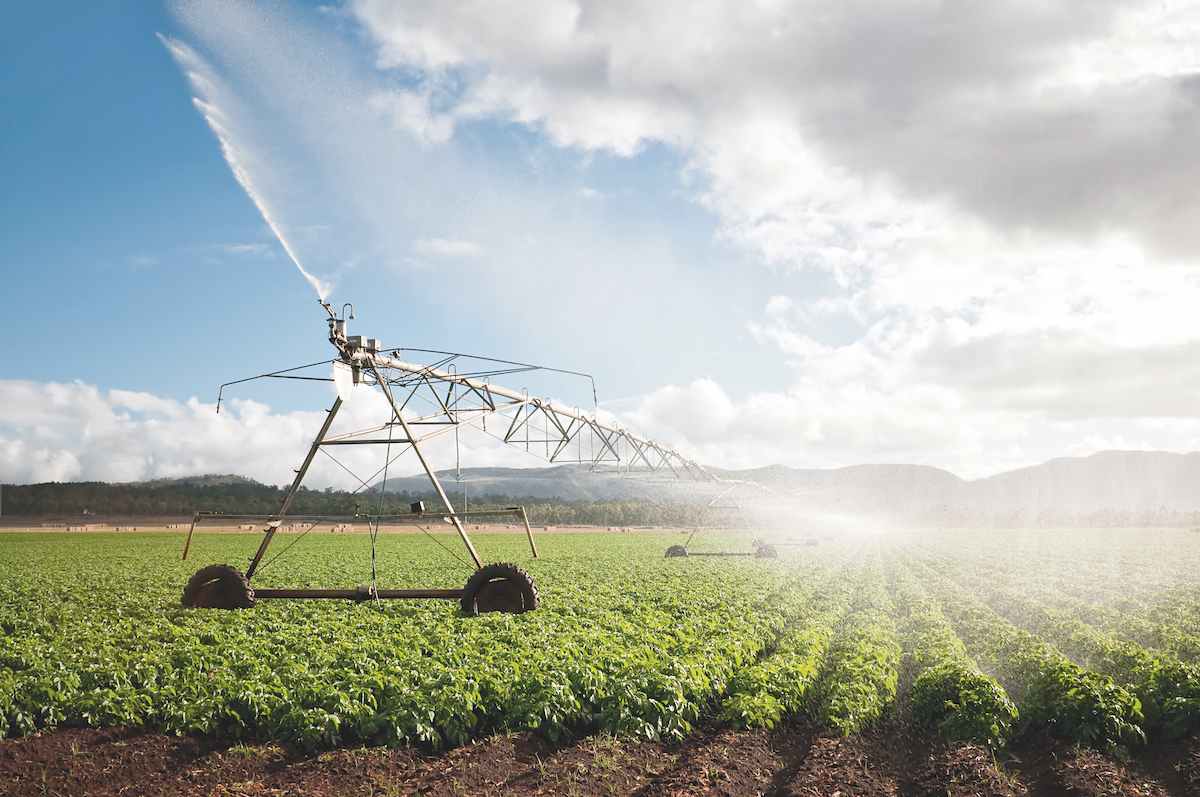
With its core business being the delivery of water, it’s vital that MI keeps going. So while lockdowns haven’t been ideal, at least the company has learned from them, improving its services and processes along the way. “We’ve gone through lockdowns before,” Brett says. “We did it when COVID-19 first started back in March 2020. Then we had to ramp it back up again last December with the outbreak in Victoria, and again for the most recent lockdown in NSW. But the team’s agile and ready for these issues as they arise.”
It’s been key for businesses around the world to adapt to the ever-changing landscape brought on by the COVID-19 pandemic in order to survive and, in MI’s case, continue to provide essential, life-giving services. “The strength of the culture of a business comes down to being able to adapt and be agile to a rapidly changing and unknown environment,” Brett says.
Meet Murrumbidgee: Australia’s Food Bowl
Located in the New South Wales Riverina District, the Murrumbidgee Irrigation Area is recognised as one of Australia’s most significant regions for food and fibre production. Thanks to its temperate climate and distinct topography, the area offers the perfect environment for a remarkable array of farming. Today, fields of green and gold, vast fruit and nut orchards, solar farms and open grazing farmland stretch the land, while unique wetlands and waterways give life to the region. The call of blue-billed ducks and the wind rustling through gum leaves fill the air. While this unspoiled country setting could be plucked straight from a storybook, climate scientists warn that there’s a villain in the story – climate change – and the region will only become dryer and hotter over the next 40 years. That’s why the work that MI does in the region is so crucial. The company is focused on improving river, irrigation supply and on-farm water management as well as farming practices and crop development. And MI realises that there is a great need to be agile and adaptive in order to respond quickly to wet periods when water is available and then switch as droughts occur more frequently. Its modernisation efforts will help it achieve this, keeping the area thriving and the communities in the area supported well into the future.
“Businesses that have spent the time and effort to create a culture of innovation, adaptation, care and respect in everyday life can more easily respond to difficult periods such as COVID-19. In times like this, it just shows how important developing a strong business culture is even when everything is going well.”
Future forward
It’s not exactly the climate Brett had ever hoped to lead in when he became CEO in October 2015 or when he was appointed to the board as Managing Director in July 2016, but sometimes that’s the way it goes. And instead of letting it get him down, Brett says the challenges of the pandemic have only helped feed his passion. “I never thought I’d be managing through a pandemic, that’s for sure,” Brett says.
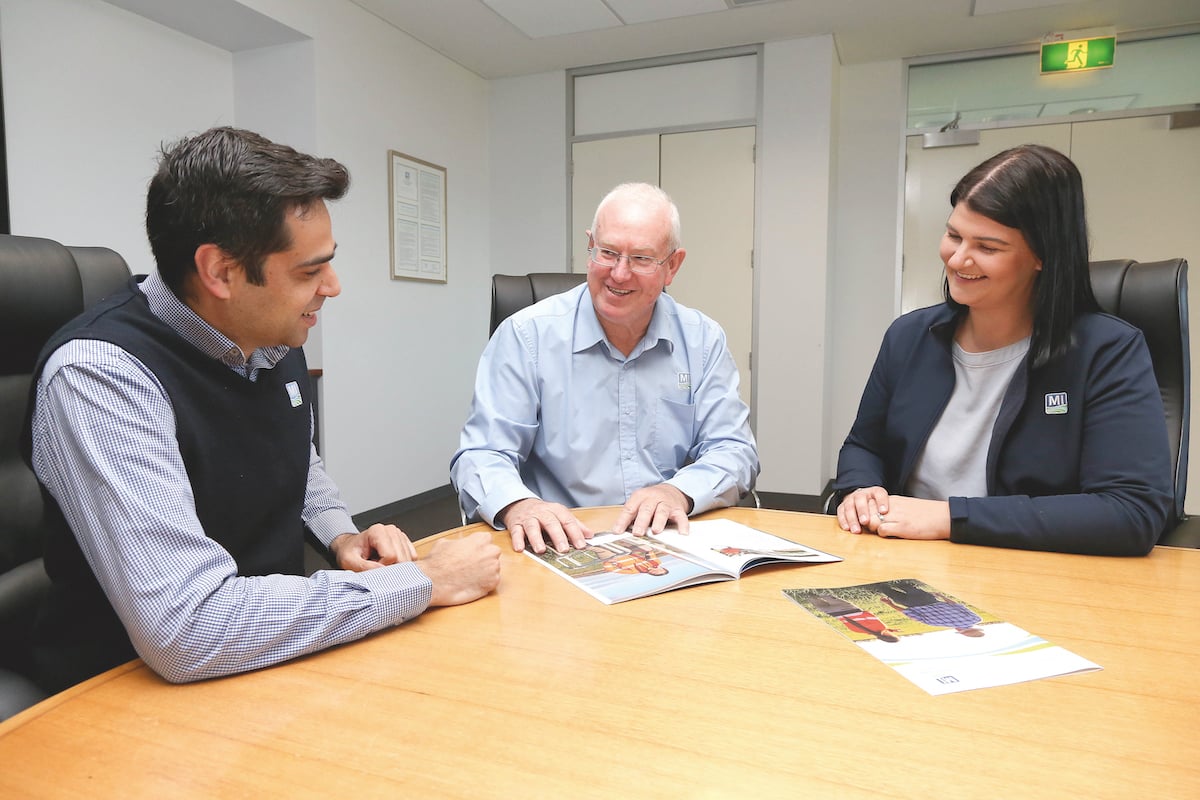
As far as the business is concerned, it’s all about setting it up for the future. You can’t change the past, but you can definitely influence the future.
“But for me, as far as the business is concerned, it’s all about setting it up for the future. You can’t change the past, but you can definitely influence the future.” It’s a theme that has carried the company to where it is today. And at this point, MI is now a very different company from the one it was just six years ago when Brett signed on. For a long time things were far more complicated than they needed to be, he shares, so he set out to improve processes and streamline the business.
“We’ve really simplified the focus on the business,” he says. “We changed from the previous authority mindset to that of a high-performing private company. Basically, all 150 of us are dedicated to serving our customers and delivering water. “At our core, we’re a water delivery business. Of course, we do a range of other things as well. But at the end of the day, the critical service that our customers rely on us for is to get water off the river and deliver it to their farms.”
The MI of the past wasn’t always so motivated by its customers, but thanks to Brett’s leadership, all that is history. “We were very non-customer-centric when I arrived, but we’ve changed that quite extensively. Over the past five years, we’ve started engaging more and more with them,” he says. And, as for the future, Brett maintains that customer centricity is the only way forward.
“I think we have to now take that next step to really look at people and ask ourselves, ‘How can we really delight our customers with the services we provide? What are those little extra things we can add that will make a big difference to our customer base?’ So our main focus is looking at what the customers really need to be successful and figuring out how we can deliver water to help them achieve that,” he says.
“The key thing is to keep our services providing our customers with the highest quality to make sure that they’re successful, because the success of this area is our customers. They take the risks. They’re the ones that grow the food and fibre for the nation. And if we can deliver water in the best possible way to assist them to be as efficient and capable as they can be, then that’s going to keep them in business. That’s going to keep this area thriving.”
Data-driven
A big part of MI providing irrigation water and drainage services is ensuring the sustainability of the diverse and productive region. To do so, the company works ceaselessly to improve water distribution efficiency through innovation, infrastructure upgrades and better business management. By using an integrated supply and drainage system, MI has the strategic advantage of being able to re-use a majority of the water within the area.
Even more, the irrigation area operates on a closed system, which means that no water is returned to the river once it enters the MIA. To continue providing excellence in all of its endeavours, MI prioritises continuous infrastructure development as a means to improve system efficiency and its service to customers. Most recently, MI has begun its most ambitious project to date – its renewal and expansion program.

This program sees MI replacing its ageing water delivery infrastructure, relining and refurbishing channels, and automating the main supply canals. The incredible undertaking is aimed at improving water efficiency and is largely funded by the Australian Government under the Private Irrigation Infrastructure Operators Program.
“We’ve been diligently working on automating our 100-year-old manual operating system. We’re about 80 per cent there now, but soon the whole system will just work itself, all managed by a centralised control room,” Brett shares. “It’s really going to help us further improve our services. There’s so much data coming in. We have streams of data and information to pull from now to interpret and analyse, giving us greater information, which allows us to respond to issues quicker and look for more ways to improve our water delivery services.”
As in most industries in this day and age, data is everything. Data-driven companies benefit from a treasure trove of advantages like continuous improvement, enhanced consistency, higher employee satisfaction rates, improved productivity and more. “We have to be a data-led business. There’s so much to gain from turning all of this acquired data into usable information to improve the business,” Brett says.
“For me, it’s really exciting; we’ve been on this change journey now for five or six years, and the next three years will really embed that and set our business and this area with all of its farmers up for the next 50 years.”
Culture shift
The impact of a project of this depth is far-reaching, and Brett says it’s reverberating throughout the entire business. “This modernisation has been part of our cultural shift and, overall, it’s just been an overarching transformation across the company,” he points out. “We’ve had to change all of our systems, all of our structures and all of our mindsets to even begin to use it effectively.”
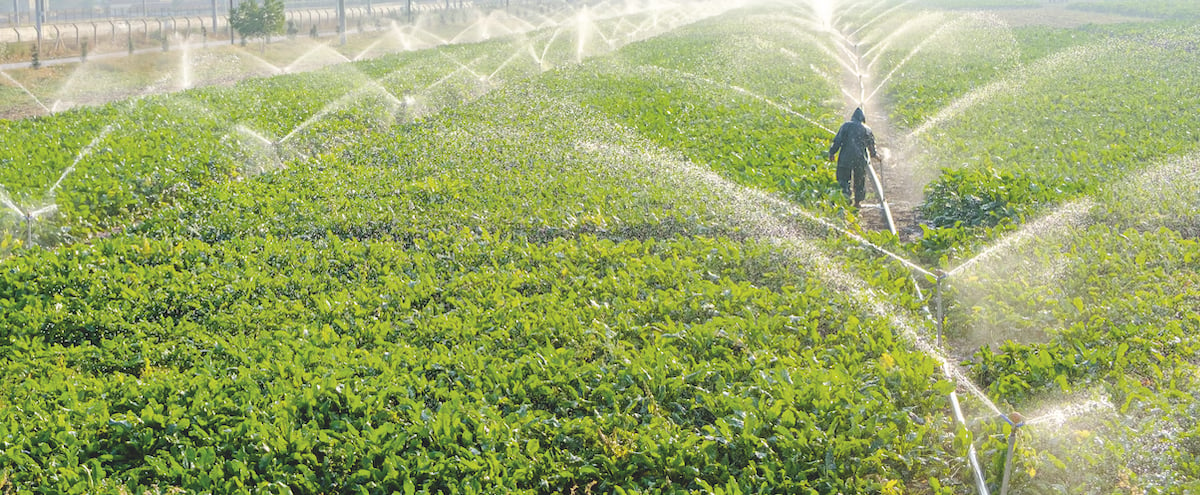
Brief History
The Murrumbidgee region’s history is intertwined with the landscape.
1900:‘The Father of Irrigation’ Sir Samuel McCaughey irrigates 405 hectares through 97 kilometres of supply channels.
1905: The punt across the Murrumbidgee River at Darlington Point is replaced with a single bascule bridge.
1906: The government confirms it will construct a large-scale irrigation scheme in the area and name it the Murrumbidgee Irrigation Area (MIA). Work commences on Burrinjuck Dam.
1908: The Yanco Experiment Farm is developed to show settlers what can be grown in the area.
1912: The MIA is established, following the construction of the Burrinjuck Dam, Berembed Weir and 139 kilometres of canals.
1913: The Yanco Power Station, now home to the Yanco Powerhouse Museum, is built to supply power for the MIA.
1924: Eight farmers plant the first commercial crop of rice in Australia on land around Leeton and Griffith.
1945: The McCaughey Memorial Institute near Jerilderie is established. To this day, it remains a major agricultural research and education facility.
1970s: Koalas are reintroduced to the area alongside the Murrumbidgee River in Narrandera.
1999: The MIA is privatised, making the irrigation network now owned by Murrumbidgee Irrigation, which, in turn, is now owned by most of the landowners.
2021: Murrumbidgee Irrigation is 80 per cent done with its modernisation efforts, which see it replacing its ageing water delivery infrastructure, relining and refurbishing channels and automating the main supply canals, all in efforts to improve water efficiency.
However, despite the growing pains, Brett says the project has been completely worthwhile. “The delivery now is just outstanding,” he smiles. “And I think the changes the teams have done there have really shone through. That’s why we put so much work into the culture of our business beforehand because we anticipated these changes happening, and we knew they would continue to happen as everyone learned how to use all the new infrastructure and all these new toys.”
This is one area that Brett credits as a highlight in his time with the company. “I’m most proud of the development of our people,” he says. “To see them step up and take on new challenges and initiatives, and invest time in them, both personally and through leadership courses, means a lot. Being able to sit back and know that I had a small part in assisting our people to really perform is quite fulfilling.”
However, it took some time to get to that point. Brett had to really roll up his sleeves and get in there to make the culture what it is today. “I had to get rid of all the rubbish around our team. I had to give them clear expectations and the tools and training they needed to be successful. And it’s just amazing how they’ve changed and stepped up,” he says.
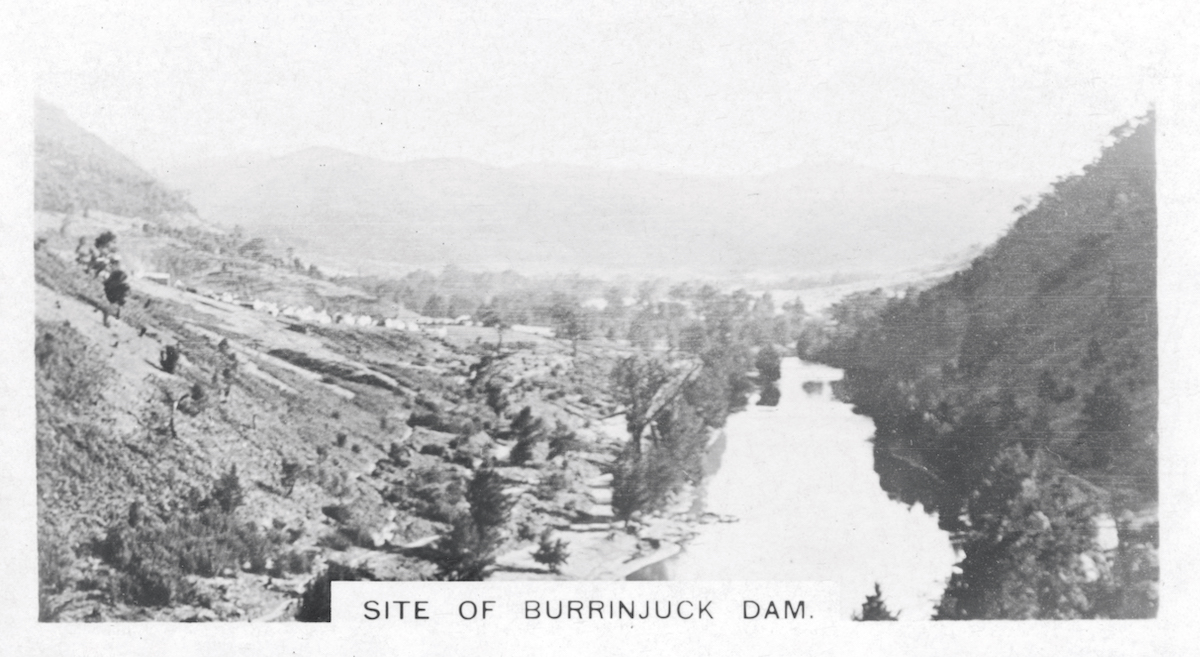
“At the same time, we’ve also had a reasonable amount of our staff retire. With this, we’ve seen a real renewal in our leadership and middle management with so many young people taking over these roles. They’re just fantastic. Giving them the support, training and help to become successful and to see them leading so well already is something I’m really proud of. Hopefully, it’s a legacy I leave behind; one that ensures the people that are here run the business successfully, long into the future.”
MI’s leadership training programs, which are available to those in both the middle and senior management teams, aren’t just focused on managing; they’re focused on leading. “We’ve put enormous efforts into these programs,” Brett says. “We believe in training our management teams to be proper leaders rather than just managers. Now that we’ve initiated this training, our managers have really stepped up; they’re leading. And it’s all because our focus is to be employee enabled, performance enabled. We empower them and trust them to get the job done.”
We’ve been on this change journey now for five or six years, and the next three years will really embed that and set our business and this area with all of its farmers up for the next 50 years.
Brett’s take on leadership is one that’s both unique and refreshing. “My ethos as a leader is that, when people say, ‘How many people do you have reporting to you?’ I respond, ‘None. I don’t have any people reporting to me – I report to 150 people.’ My job is to work for them. It’s up to me to make sure that they have the resources, the training, the direction, the corporate plan, the support, the tools and the money they need to do their jobs extremely well, and succeed. And, quite frankly, if I can do that and they all succeed, then by default, I succeed as well.”
Extraordinary outcomes
Brett has had quite an extensive career, spanning a range of different organisations from BHP to Snowy Hydro and CWP Renewables. “Previously, I worked in heavy industry and infrastructure with steel, mining, shipping, hydro and wind generation,” he shares. “I originally trained part time with BHP, which led to a Bachelor of Engineering and a strong belief in education.”
About MIA
The Murrumbidgee Irrigation Area (MIA) was established in 1912 following the construction of Burrinjuck Dam, Berembed Weir and 139 kilometres of canals. The irrigation scheme was designed to drought-proof inland Australia and provide food security for the nation. The governing body of the MIA for the first 84 years was the Water Conservation and Irrigation Commission. The MIA and districts remained a state government entity until 1999 when it was privatised. The irrigation network is now owned by Murrumbidgee Irrigation which, in turn, is owned by most of the landowners.
That strong belief in education led Brett to carry on, receiving a Master of Engineering Science, Project/Risk Management and a Graduate Diploma of Applied Finance and Investment. Afterwards, he also attended the prestigious Advanced Management Program at Harvard Business School. “It’s always been a passion of mine to improve and develop new ways of doing things through infrastructure,” he says. “And that has led me to my other passion: supporting people to achieve their best. Now, these two passions have combined, helping me to achieve extraordinary outcomes in business.”
That’s why working at MI has been so fulfilling for him. Here he’s been able to help affect change, improving water delivery and changing lives. “A lot of the companies I was in before were very large businesses. You worked in smaller groups, but you still didn’t really have the opportunity to make a major difference in the culture and total performance of the business,” Brett shares. “But here, I get to do that. And, at the same time, I’ve still been privy to all of the infrastructure, the engineering and the toys to play with and improve, which I love doing as well.”
At the same time, he’s been fortunate to have a team of hardworking, passionate people at his disposal to help him in this journey. “I’ve really enjoyed being able to significantly change the culture, and now the team here at Murrumbidgee Irrigation is unparalleled,” he beams. “I’ve had a fantastic leadership group out here, and all the people involved have just shown a real commitment to the company. There’s a real commitment to the area in terms of delivering water. And they’re also all tied into the community as well.”
As a purpose-led business, it comes as no surprise that MI supports the communities it impacts in more ways than just delivering water. It works collaboratively with local councils, businesses, charity organisations and sporting groups, investing in partnerships that provide benefits across the wider community. “Our sponsorship and donations program is focused on investing in our people’s community and charity endeavours,” Brett points out.
“They all work to promote our fantastic region, the food bowl of the nation, and improve safety.” When Brett came on board with MI, he initiated a renewed interest in safety, marking it as a top priority that underscores everything the company does.
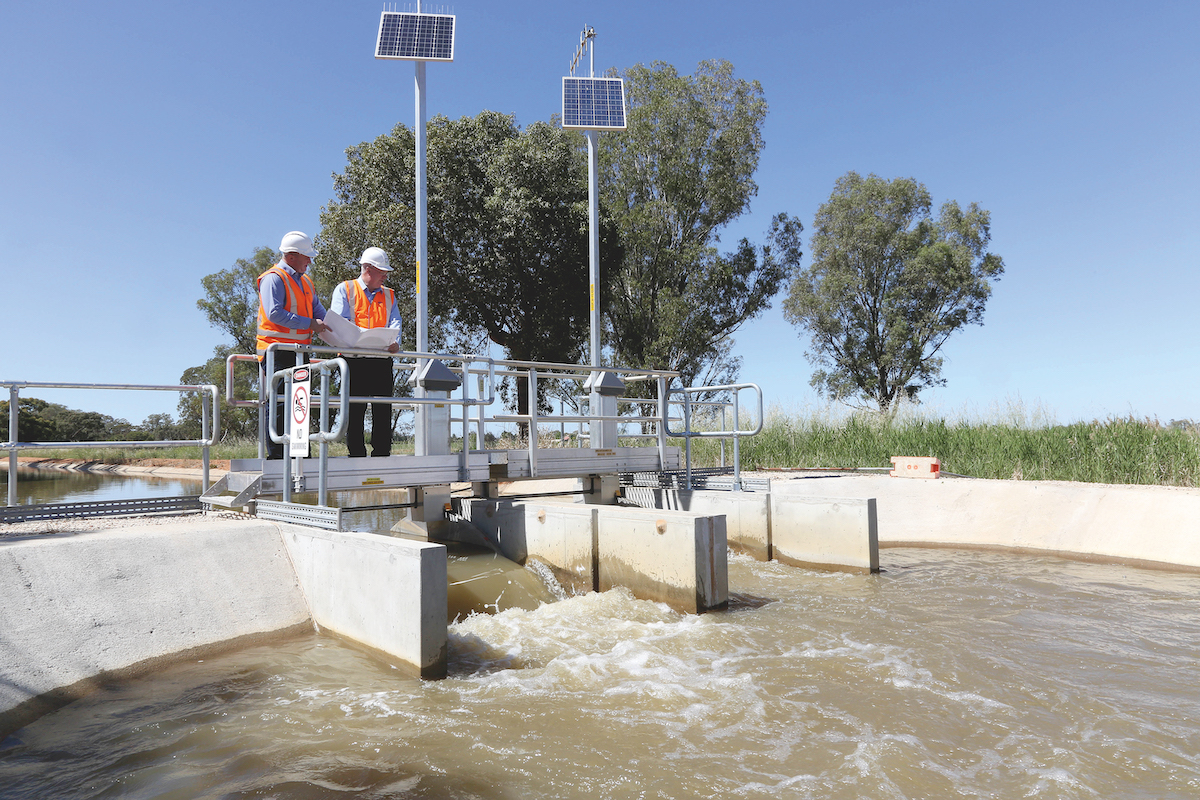
“For the first time, we’ve gone 12 months lost time injury free,” he says. “We had a huge change in the whole safety space and moved into behavioural safety as opposed to just the engineering controls and admin procedures. Now, our people really think and put safety first, and that’s been demonstrated in our results.”
Prestigious projects
MI’s 2021 recently completed winter works program was achieved with zero safety incidents. The program saw the automation of 167 outlets and 141 regulators in Murrami and Griffith. And Brett is pleased to see the fruits of its labour. “Last season was a good one off the back of a few lean years for irrigators coming into the new water season. And there’s anticipation that 2021–22 will be even better,” he says.
“The diversity and quality of the produce from our region, including winter and summer cereals, nuts, fodder, aquaculture, wine grapes, citrus and cotton is a testament to the value of irrigation not only to NSW but our national economy as well.”
Even more, MI’s maintenance program has transitioned from winter works to in-season works, with projects including channel bank repairs, desilting and pump-shed maintenance. And while the projects are now completed, Brett shares that the upgrades will be continuing throughout the irrigation season. MI holds the environment in the highest regard, recognising the importance of a healthy river system and other aquatic environments. Therefore, it works with irrigators and customers to promote enhanced environmental outcomes.
Among MI’s most successful projects to date has been the redevelopment of Barren Box Storage, which has restored much of the site to its natural condition and is regarded as one of the largest water infrastructure projects in regional Australia, specifically instigated to return water back into the environment. The project has even been awarded the prestigious Environment and Heritage Award in Sydney’s Engineering Excellence Awards.
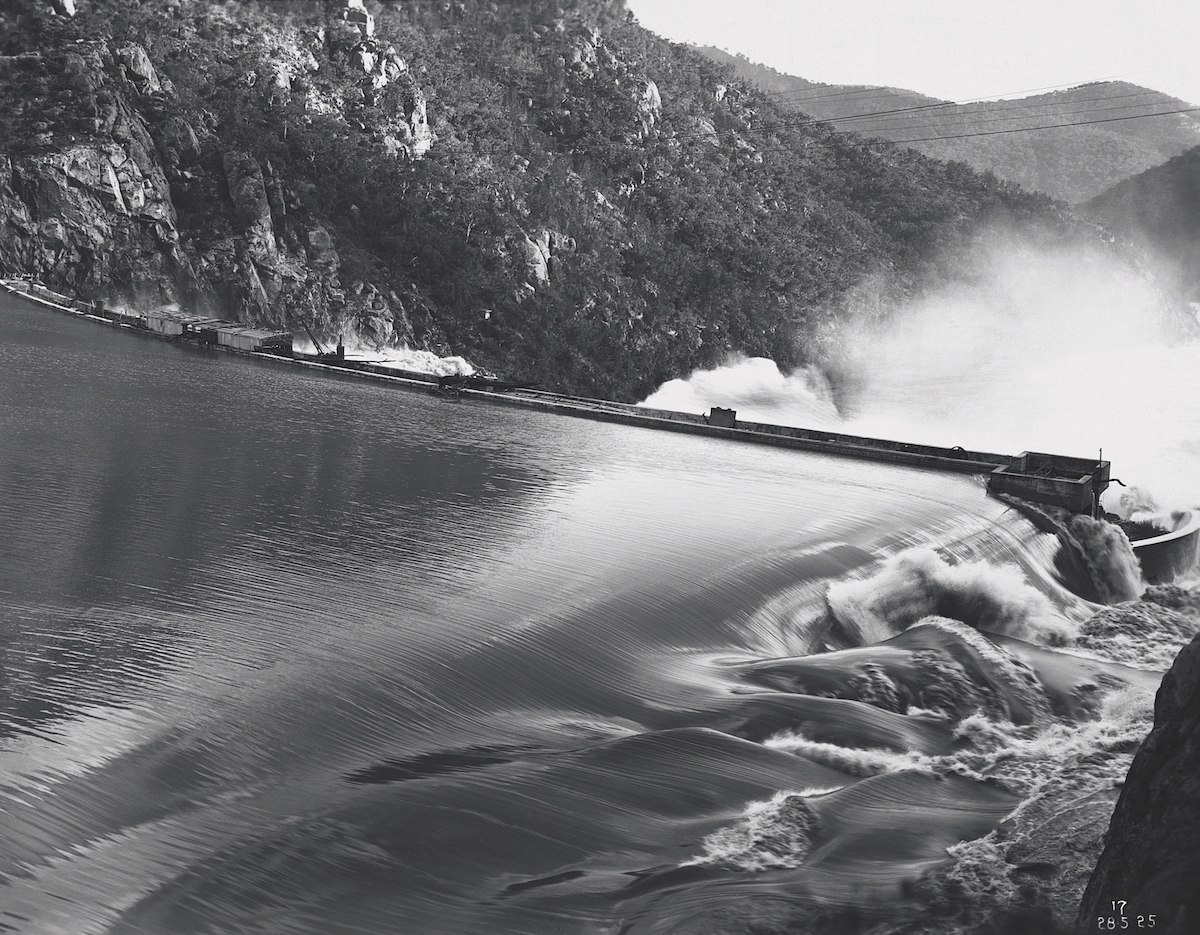
About MIA
The Murrumbidgee River provides a critical water supply to several regional centres and towns, including Canberra, Gundagai, Wagga Wagga, Narrandera, Leeton, Griffith, Hay and Balranald. The region’s villages such as Goolgowi, Merriwagga and Carrathool use aquifers and deep bores as their potable supply.
The Barren Box project required innovative water management infrastructure for the reconstruction of water storage facilities within Barren Box and the development of en route water storage at Bray’s Dam. Supported by Water for Rivers, the end result of the project was a highly accredited reconstruction of an existing water storage facility that enhances national water storage and distribution in an area of great environmental significance.
Shared successes
With a core business of delivering water through an extensive integrated supply and drainage network in the MIA – one of the most diverse and productive regions in Australia, forming part of the MurrayDarling Basin and covering an area of nearly 379,000 hectares, where up to 190,000 hectares is irrigated – MI’s impact on the economy is huge.
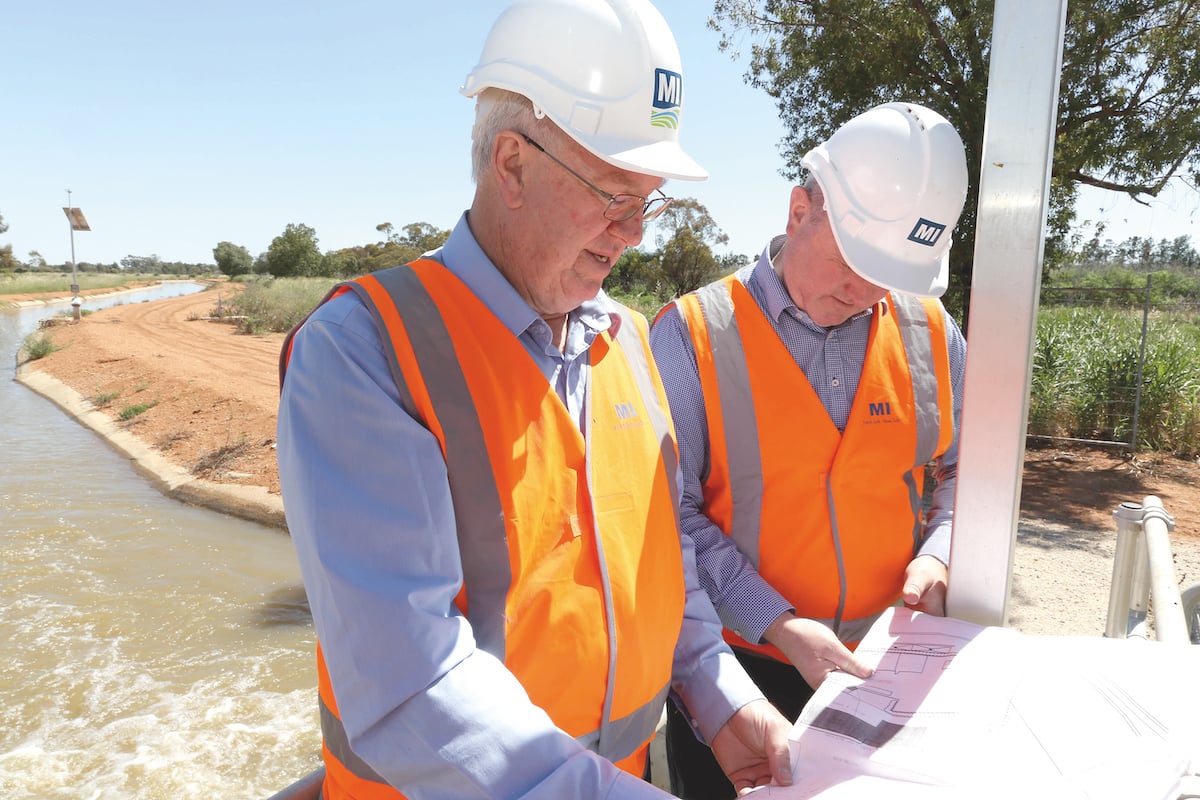
MIA is home to more than 50,000 people with the majority of jobs inextricably tied to the water that the company supplies to farms and industry, according to MI. And it’s these people Brett thinks about when he’s planning for MI’s coming years. “The biggest challenge is a future with less and greater variability in water supply due to climate change and ongoing water reform. These issues are leading to an increased focus on improving river irrigation supply and on-farm water management as well as farming practices and crop development,” he reveals.
“There is a great need to be agile and adaptive in order to respond quickly to wet periods when water is available and then switch as droughts occur more frequently.” To get through these challenges, Brett says, it all comes back to the culture of the organisation. “Within our smaller area for irrigation, it’s all about understanding our purpose and working as a single team towards making our customers successful,” he says.
“We have an ethos, which I said before, that our customers are the ones that take the risk. They use the water to turn it into food and fibre. And if they don’t have water, a mistake happens or they get frost, then they’re the ones that don’t get the income.
“So really having that focus that we’re successful if our customers are successful is a key aspect of how we’ve been able to change and provide services in a way that makes this area one of the premier areas to have irrigated agriculture in.” Of course, MI couldn’t do it all on its own. It relies on the expertise and strengths of key business partners to help it deliver impeccable service to customers.
“Maintaining positive relationships has been essential in our ability to achieve what we’ve been able to achieve,” Brett says. “When I first got here, there weren’t any strong relationships with key partners – the company hadn’t really ever done that because it was operating off of a manual system that was built a century ago and only needed a few people to come in for support and maintenance.
“Now, however, we’ve worked on building strong relationships with about three or four groups that have made a huge difference to our organisation. They’re part of our business, and we’re part of their businesses. We’ve created relationships with them, starting with myself and their CEOs, and working right down through all of the levels of the business. These partnerships have been a big part of our success.”
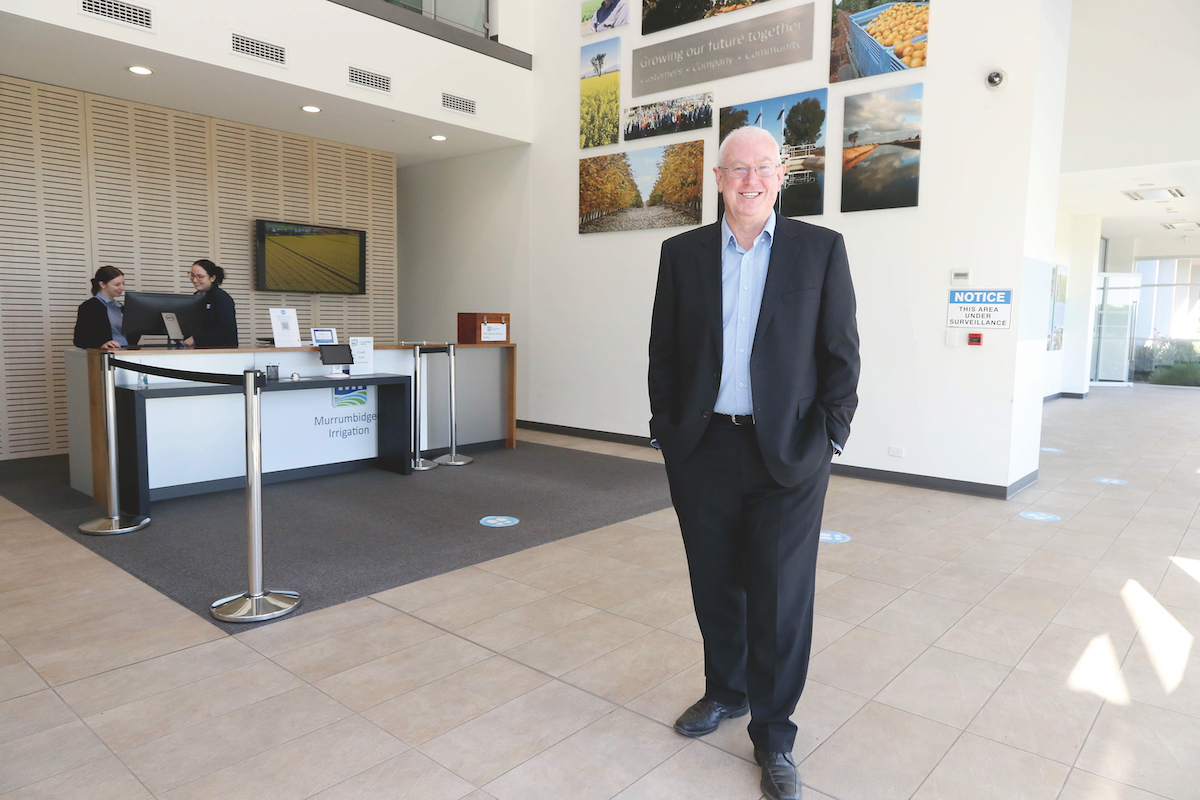
It’s always been a passion of mine to improve and develop new ways of doing things through infrastructure. And that has led me to my other passion: supporting people to achieve their best.
Some of the partnerships that Brett maintains as key are the ones MI has with companies like Rubicon, Aquamonix and TechOne. “Rubicon is our supplier for our automation, Aquamonix has provided our new meters and TechnologyOne is our systems provider,” he says.
“And, of course, there are a couple of other businesses we’re working with too. Having these relationships has been a huge change for us that has delivered significant benefits.” With the strong foundation that Brett has put into place, MI is set up for a thriving future, doing what it does best, delivering water, the lifeblood of the region, to all of its customers – regardless of circumstance.
“Even with all the challenges in irrigated agriculture at the moment with basin plans, climate change, the pandemic, the lack of confidence, trade issues and everything else, being able to at least set up one aspect in terms of delivering water to around 3,000 customers so they can have that assurance and confidence and look to grow their businesses in this particular climate is key. And that’s exactly what we’re doing,” Brett asserts.
“And in doing this, well, that’s what will keep irrigated agriculture growing and developing while being such a strong part of the Australian economy now and well into the future.”
Proudly supported by:

